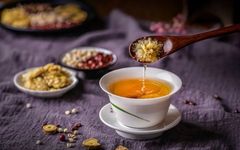

 Today, we introduce this classic formula, known as the first formula for “Wind-Heat Cold” – 桑菊饮 (Sang Ju Yin).
Today, we introduce this classic formula, known as the first formula for “Wind-Heat Cold” – 桑菊饮 (Sang Ju Yin).


 Wind-Heat Cold First Formula
Wind-Heat Cold First Formula


This is a famous formula from Wu Jutong in “Wen Bing Tiao Bian” – 桑菊饮 (Sang Ju Yin).
Let’s first look at the original text:
In cases of Taiyin Wind-Warmth, where there is only coughing and not much fever, for those with mild cough, a pungent and cool light formula, 桑菊饮 (Sang Ju Yin) is the main treatment.
The original formula consists of:桑叶 (Sang Ye – Mulberry Leaf), 菊花 (Ju Hua – Chrysanthemum Flower), 杏仁 (Xing Ren – Apricot Kernel), 连翘 (Lian Qiao – Forsythia Fruit), 薄荷 (Bo He – Peppermint), 苦桔梗 (Ku Ju Geng – Bitter Platycodon), 甘草 (Gan Cao – Licorice), and 苇根 (Wei Gen – Reed Root).
This formula is actually a pungent and cool exterior-releasing agent for the initial stage of Wind-Warmth, specifically for treating the symptoms of Wind-Heat Cold.
Why is it that some people recover quickly after taking cold medicine or drinking ginger soup, while others get worse? Because they are not treating the symptoms correctly and are taking the wrong medications.

 Are all colds caused by Wind-Cold?
Are all colds caused by Wind-Cold?

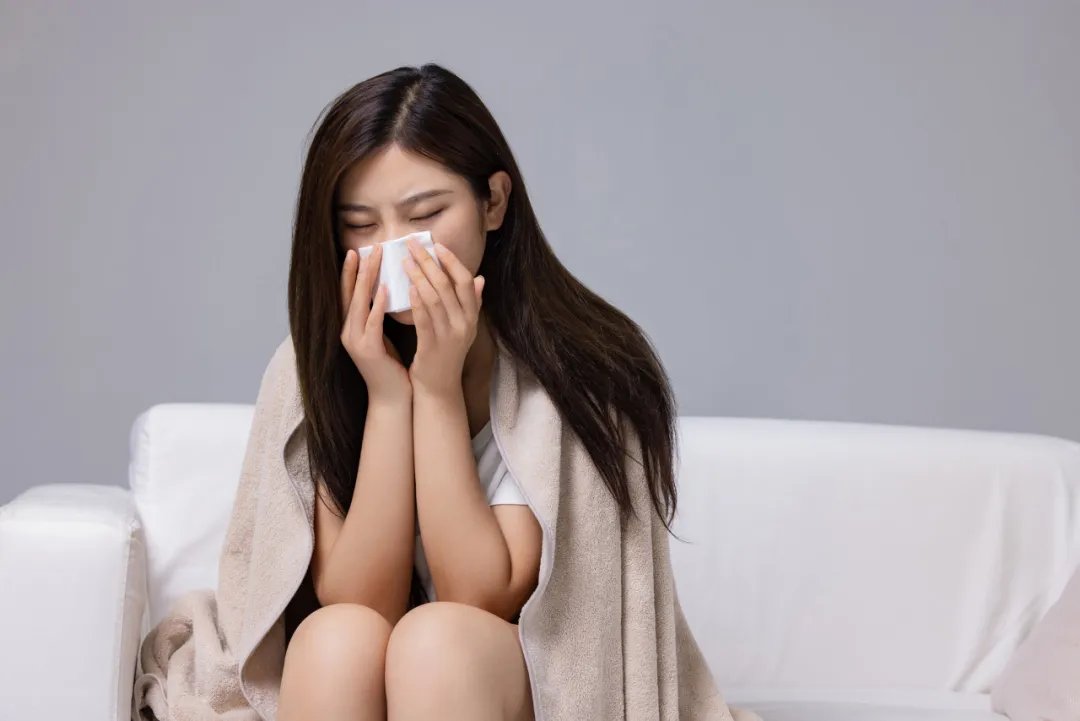
No, there is also a type called Wind-Heat Cold! How can we distinguish between them?
In fact, whether it is Wind-Cold or Wind-Heat, symptoms include coughing, nasal congestion, runny nose, headache, and body heaviness.
The difference between the two is:
Wind-Cold Cold is mostly caused by external pathogens like cold, invading the body surface.Symptoms include clear nasal discharge, coughing white, thin phlegm, aversion to cold, and no thirst or a desire for hot water.
Wind-Heat Cold, on the other hand, is when external pathogens invade deeper into the lungs.Symptoms include yellow, turbid nasal discharge, coughing yellow, thick phlegm, aversion to heat, dry mouth, and a desire for cold water.
Even a Wind-Cold Cold, if not properly treated, can turn into a Wind-Heat Cold.
The treatment for Wind-Cold Cold focuses on warming and dispersing cold, and drinking ginger soup is appropriate.
However, the treatment for Wind-Heat Cold focuses on cooling and dispersing heat, so drinking ginger soup at this time can cause problems.

 解读桑菊饮 (Sang Ju Yin)
解读桑菊饮 (Sang Ju Yin)

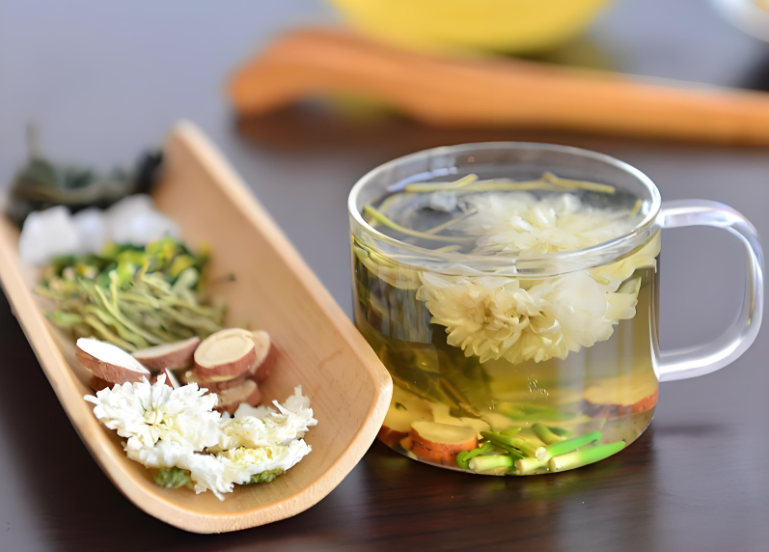
Therefore, 桑菊饮 (Sang Ju Yin) is Wu Jutong’s first choice for treating Wind-Heat Cold, with the effects of dispersing wind, clearing heat, and relieving cough.
Moreover, 桑菊饮 (Sang Ju Yin) is also effective in clearing heat and moistening dryness, so this formula is definitely not limited to treating Wind-Heat Cold.
As long as adjustments are made based on individual constitution, taste, and climatic characteristics, it can also be used for daily health maintenance.
If you start to experience symptoms such as dryness in the mouth and throat, nasal congestion, dry stools, red eyes, aversion to heat, aversion to wind, or signs of internal heat due to wind, heat, or dryness, you can make a homemade version of 桑菊饮 (Sang Ju Yin).
Preparation of 桑菊饮 (Sang Ju Yin)
Ingredients:7g桑叶 (Sang Ye – Mulberry Leaf), 3g菊花 (Ju Hua – Chrysanthemum Flower), 6g芦根 (Lu Gen – Reed Root), 6g桔梗 (Jie Geng – Platycodon), 2g薄荷 (Bo He – Peppermint), 2g甘草 (Gan Cao – Licorice).
Method:1. Boil all ingredients except peppermint in water for 10 minutes; 2. Add peppermint and boil for another 5 minutes before turning off the heat.
桑叶 (Sang Ye) focuses on dispersing internal wind and can clear the heat from the lung channels; 菊花 (Ju Hua) directly enters the lung meridian to clear and disperse Wind-Heat from the upper jiao. Both are sweet, cool, and light, which can clear the lungs and calm the liver, preventing excessive liver rising while allowing lung qi to descend more easily.
薄荷 (Bo He) is a representative of pungent and cool exterior-releasing agents, assisting 桑叶 (Sang Ye) and 菊花 (Ju Hua) in dispersing upper jiao Wind-Heat and clearing the head. Once the exterior is resolved, the pathogenic qi can be expelled smoothly.
Whether it is autumn dryness or Wind-Heat Cold, cough symptoms are inevitable. 桔梗 (Jie Geng) can help to promote lung qi and achieve the effects of expelling phlegm and relieving cough.
Autumn dryness injures yin, and heat also injures yin. When the body’s fluids are insufficient, leading to dry mouth and thirst, 芦根 (Lu Gen) is the most suitable addition. It nourishes yin, generates fluids, and promotes urination without causing dampness, trapping pathogens, or injuring yin. It can clear the lungs and prevent excessive Wind-Heat from damaging fluids.
Finally, 甘草 (Gan Cao) harmonizes the various herbs, enhancing their effects and achieving the power of dispersing wind, clearing heat, and relieving cough.

 Who Can Drink 桑菊饮 (Sang Ju Yin)
Who Can Drink 桑菊饮 (Sang Ju Yin)

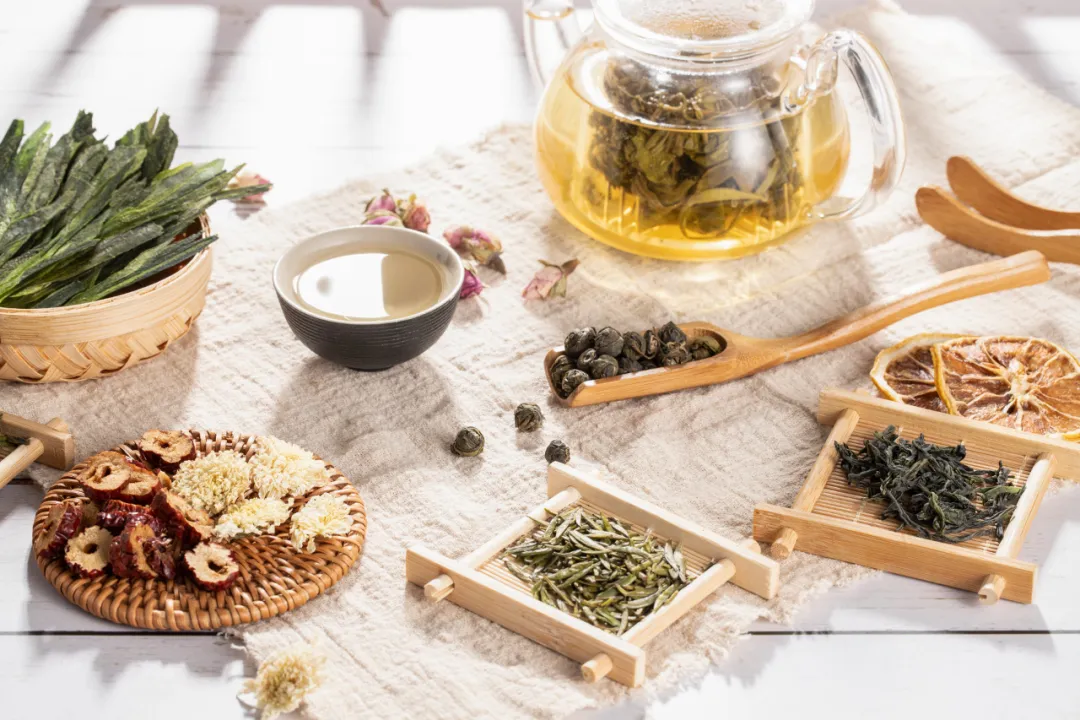
To summarize, when is 桑菊饮 (Sang Ju Yin) suitable for use?
First, for those easily affected by Wind-Warmth invading the lungs, leading to the initial stage of Wind-Heat Cold with mild fever and cough, 桑菊饮 (Sang Ju Yin) can be used.
Second, for those with yin deficiency and internal heat, leading to dry cough, sore throat, thirst, and dry mouth, 桑菊饮 (Sang Ju Yin) can be used.
Third, for those who sweat excessively and lose fluids, especially those with yin deficiency and internal heat, 桑菊饮 (Sang Ju Yin) can be used to moisten dryness and relieve internal heat, preventing coughs and colds.
Fourth, for those with excessive liver qi, who often stay up late, are irritable, prone to headaches, dry eyes, and high blood pressure, 桑菊饮 (Sang Ju Yin) can help clear liver fire.
桑菊饮 (Sang Ju Yin) acts like a fire extinguisher in the body. Once there are signs of heat, such as irritability, sore throat, or dry nose, brewing a cup of this tea will instantly dissipate the feeling of heat.





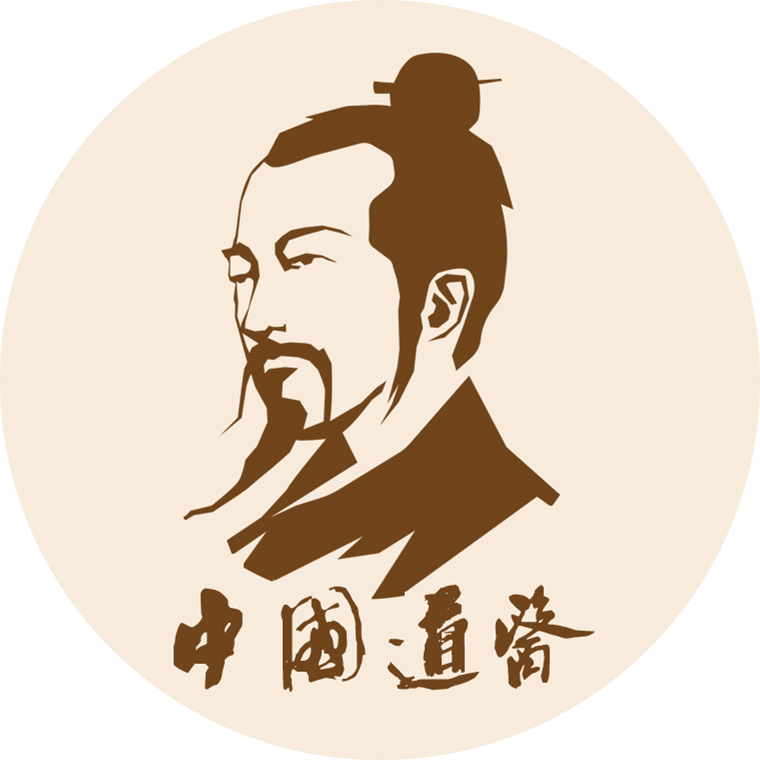
Daoist Medicine Video Account
⊙ The content of this article is for clinical reference only; non-TCM professionals should not attempt to self-medicate.
⊙ Some images and texts are sourced from the internet; if there is any infringement, please contact us for removal.
⊙ For Daoist medical consultations, add WeChat ID: daojiaoh
⊙ For submissions and collaborations: [email protected] (original submissions are welcome)

